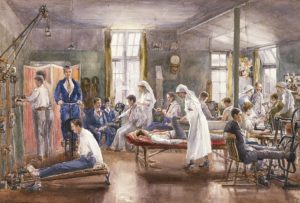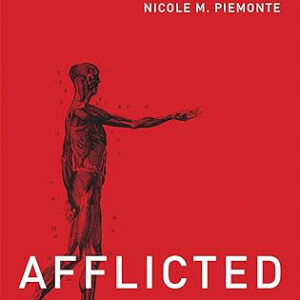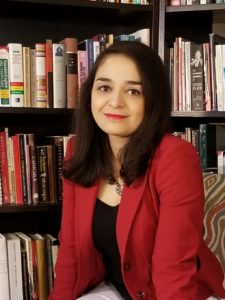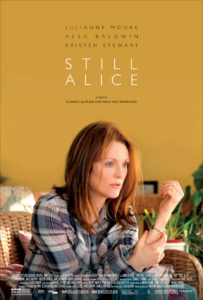Spring 2019

Physical Therapy at Bath War Hospital: Rehabilitation and Its Links to WW1
Heide Pöstges, MSc, PT explores the accelerated development of rehabilitation medicine during the First World War (WWI), through the artwork of British painter E. Horton. In the painting, “Physical Therapy at Bath War Hospital,” Horton depicts one of the very first physiotherapy departments in England. As Pöstges analyzes the painting in its historical context, we are given a new perspective into the socio-political-economic aspects of the evolution of physical therapy.

Editorial: Cultivating Vulnerability
Download the article (pdf) Table of Contents “I cannot find a single example of courage, moral courage, spiritual courage, leadership courage, relational courage…that was

Using Critical Reflexivity to Enhance Clinical Care: A Clinician Perspective
In the Critical Research and Perspectives section, Jenny Setchell, PhD, BSc(PT) and Blythe Dalziel, MScPT illustrate the process of critical reflexivity to examine values and assumptions that underpin clinical practice.

Goodbye, With Love
Amanda Sharp won this year’s CHEP-JHR Student Essay Contest with her essay “Goodbye, With Love,” which reflects on both her personal and her professional experiences with patients in hospice care.

Returning Back to Oneself: Cultivating Vulnerability in the Health Professions
In her essay featured in this issue, “Returning Back to Oneself: Cultivating Vulnerability in the Health Professions,” Nicole Piemonte, PhD reflects on her book, Afflicted: How Vulnerability Can Heal Medical Education and Practice. Using philosophers such as Nietzsche and Kierkegaard as guides, Piemonte seeks to explore why many clinicians experience a “crisis of meaning” in their work. With the primary focus of healthcare education on biologic intervention, topics of vulnerability and the lived experience of suffering are largely minimized, if not absent. Piemonte calls for us to create a learning environment that recognizes vulnerability as a means to cultivate the courage to authentically engage with human suffering.

Stone Tongue
Download the article (pdf) Table of Contents The doctor observes.My son’s green-marbled eyes peerup at her. His kitten lips squirm,open, and leaden consonantsstripped of vowels

Profiles in Professionalism: Interview with Gail M. Jensen, PT, PhD, FAPTA
In our second installment of our “Profiles in Professionalism” series, we interview Gail Jensen, PT, PhD, FAPTA, FNAP, dean of the Graduate School and vice provost for Learning and Assessment at Creighton University. Recognized internationally for her scholarship in expert clinical practice, professional ethics, and interprofessional education, Jensen explores the meaning of professional identity and the ways we can use the humanities to strengthen professionalism in the field of physical therapy.

Reflections on Early Attempts to Provide Pain Neuroscience Education in Conjunction With Biopsychosocial Care From the Patient and Interprofessional Team Perspectives
Download the article (pdf) Table of Contents This case reflection is presented by an interprofessional rehabilitation team at a private, outpatient rehabilitation practice as an

Resources: Spring 2019
Download the article (pdf) Table of Contents How Stigma Shaped Modern Medicine Over the past few years, awareness has grown about the role

Guest Editorial | Infusing Rehabilitation with Critical Research and Scholarship: A Call to Action
Download the article (pdf) Table of Contents ]Reprinted with permission from University of Toronto Press (https://utpjournals.press). Published Online: November 30, 2018. https://doi.org/10.3138.ptc.70.4.gee. Correspondence to: Jenny Setchell,

Alzheimer’s Disease and Emotions: An Interpretive Phenomenological Analysis of the Film “Still Alice”
Download the article (pdf) Table of Contents Background: Despite the fact that Alzheimer’s disease (AD) afflicts millions of people in the United States, most Americans

